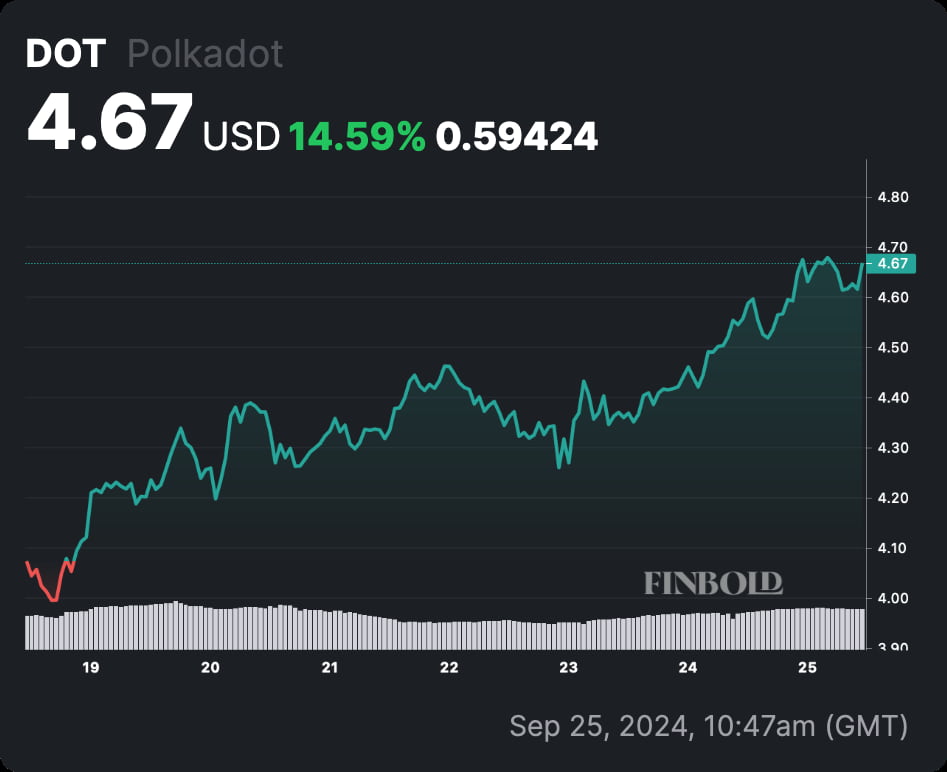Polkadot (DOT) recently made some headlines after opening up its marketing budget and dividing opinions in the cryptocurrency market. The Web3 project continues to bet on spending transparency, now revealing a nearly $400,000 budget for Token2049 in Singapore.
While reporting the six-digit expenses for the crypto event, Eric Holst raised a question: “Is Token2049 in Singapore worth it?”
In the comments, people exposed different answers and opinions to Holst’s question, with a mix of supportive and opposing biases.
Token2049 is one of the world’s leading crypto events, that happened this year in Singapore, on September 18 and 19. Polkadot’s team joined hundreds of other projects in a battle zone for people’s attention, making some waves with spending transparency.
Polkadot’s crypto event expenses
As Eric Holst explained, the six-digit fund came from the Events Bounty and the OpenGov Treasury from Polkadot’s community. Holst’s team pitched its case to the decentralized autonomous organization (DAO), who voted in approval for the Token 2049 campaign.
Overall, they spent $387,772, of which $199,500 was for a Platinum Sponsorship at the crypto event. Polkadot spent $100,000 on the booth and $25,000 on a non-disclosed “demand generation campaign.”
The remaining $63,272 was spent on travel expenses for “8-10 booth staff” ($20,000), merch ($10,000), photo and video production ($5,000), and the “rest for misc,” in Eric Holst’s words.

“Is Token2049 in Singapore worth it?”
“So, is it worth to spend almost half a million on Singapore? I can’t say it now because I’ve just started writing the report with all the results, but I will share it here. The point is that Polkadot is open for business, and good ideas can be executed here without asking anyone for permission (if you’re transparent and can execute).”
– Eric Holst
While Eric Holst still can not answer his “Was it worth it” question, commentators have shown mixed feelings in LinkedIn’s comments section.
For example, Witold Smieszek believes many of the approved expenses on OpenGov are “resource inefficient due to malincentives.” Smieszek cited the huge amounts spent on “KOLs” or other vapid attention campaigns, neglecting product-focused areas.
Nitin Gupta and Stefan Grasmann also showed a negative bias related to the significant amount spent. First, Gupta commented on his experience, while Grasmann explained $400,000 is “a lot of budget” for “normal companies.”
“I was there for both the days, roamed around all the floors and yet I can’t recall seeing or interacting with Polkadot folks. I must have passed around it, once or twice but the fact is it wasn’t prominent. Even after spending $387,772, if people aren’t talking about the presence, I believe that the marketing efforts need a serious revamp.”
– Nitin Gupta
On the other hand, Eric Holst received many praises and supportive comments on his work, especially the spending transparency. DAO’s are yet an experimental way to manage funds and open-source projects, but they are already revolutionizing how people do business.
Polkadot (DOT) price analysis after Token2049 Singapore
Notably, Polkadot’s native token’s price chart tells a story of success following the Token2049 Singapore crypto event. As of this writing, DOT is trading at $4.67, up 14.6% since September 18.
The interoperability-focused cryptocurrency displays an uptrend, suggesting the market has positively received the recent developments after Token 2049 Singapore.

In closing, Polkadot leads the way in applying decentralized governance to six-digit funds management, naturally raising controversial opinions.
However, the sole fact that the community is able to pitch budgets or voice their concerns or support is already groundbreaking, setting the path for how companies will operate in the following years.









